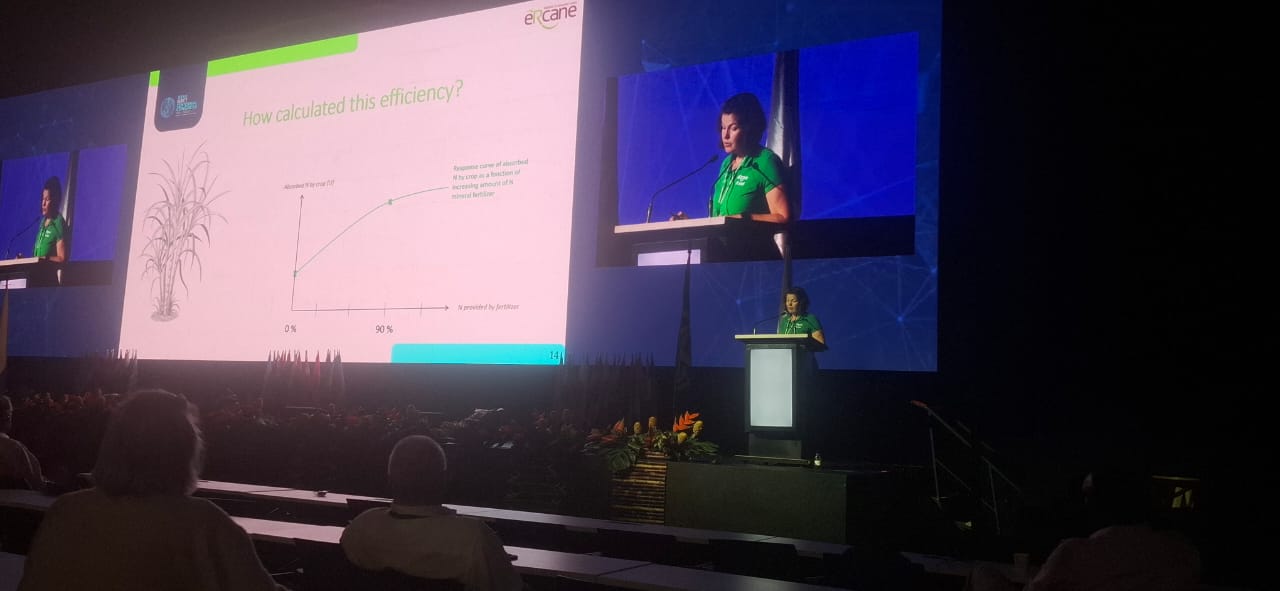Boosting Nitrogen Efficiency in Tropical Sugarcane Soils: Exploring the Latest from Amélie Février

French researcher Amélie Février unveiled significant new insights into nitrogen dynamics in sugarcane systems during the ISSCT Congress. Her presentation, “Apparent Nitrogen Recovery of Exogenous Sources of Organic Matter in Tropical Soils: Update and New Coefficients to Improve Fertilization in Sugarcane,” introduces refined metrics to improve nitrogen efficiency and reduce fertilizer waste in tropical environments.
The Challenge: Low Nitrogen Use Efficiency and High Losses
Sugarcane-intensive systems often apply high rates of nitrogen (N)—frequently exceeding 200 kg N/ha—but a sizeable portion (60% or more) is not taken up by the crop and is instead lost into the environment. Such inefficiencies lead to higher GHG emissions, including nitrous oxide (N₂O), and economic loss for producers.
Distinguishing Soil vs. Organic Matter Contributions
Février emphasizes the importance of more accurately determining how much of the crop’s nitrogen uptake originates from added organic sources (like compost, biosolids, or manure) versus native soil reserves. Common approaches like the «difference method» can be misleading due to priming effects—where added fertilizers accelerate mineralization of existing soil nitrogen.
Refined Coefficients for “Apparent Nitrogen Recovery”
Février proposes updated coefficients for “apparent nitrogen recovery”, differentiating the contributions of exogenous organic matter more precisely. These coefficients are based on controlled field studies that use isotopic tracing (^15N labeling) to track fertilizer versus soil nitrogen fates. Research indicates that sugarcane typically recovers only 20–40% of applied fertilizer N, reinforcing the need for more accurate estimation of soil vs. added N contributions .
Environmental Impacts and N₂O Emissions
Key insights also shed light on the nexus between nitrogen application and greenhouse gas emissions. Tropical sugarcane soils, especially when subject to high nitrogen inputs and waterlogged conditions, are prone to elevated N₂O release. Février’s refined methodologies help better estimate how much of those emissions originate from added organic nitrogen versus embedded soil nitrogen I.
Implications for Predictable, Sustainable Fertilization
By applying these new coefficients, fertilizer rates can be fine-tuned to match crop uptake more closely, reducing both financial and environmental costs. Importantly, accounting for nitrogen contributions from organic amendments allows producers to reduce synthetic side inputs without compromising yield—and while mitigating N₂O emissions.
In Février’s words:
“Understanding where nitrogen comes from and goes—including soil reserves and organic inputs—lets us tailor fertilization strategies that are both smart for growers and kinder to the planet.”
Conclusion: Toward Smarter Fertilization in Sugarcane
Amélie Février’s work offers a promising framework for improving nitrogen management in tropical sugarcane systems. The new «apparent nitrogen recovery» coefficients, backed by isotopic methods, support more precise fertilizer planning. Responding to both agronomic goals and environmental accountability, this research paves the way for efficient, sustainable, low-emission fertilization strategies.

